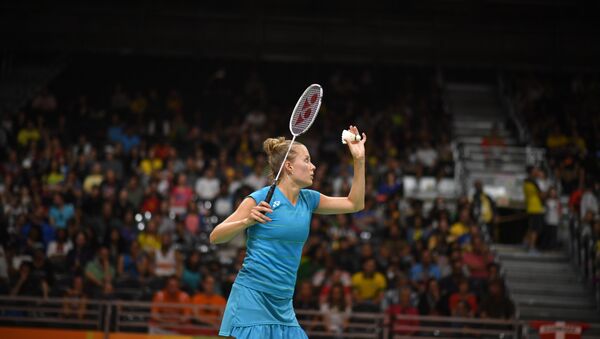The recently published tax information for 2016 has revealed that with the exception of franchise ice hockey players, Finnish athletes aren't exactly pampered with luxury. According to a survey by Finnish national broadcaster Yle, a staggering 64 percent of Finnish athletes live below the poverty line.
Financial uncertainty is known to cause constant stress, mental pressure and ultimately affect sporting results.
"It affects many athletes. Prior to the Olympic Games in Rio I had to participate in many tournaments to qualify. I went to Mexico without even having a plane ticket home. I had to call my parents and say I do not have enough money on my account. It's very stressful," badminton player Nanna Vainio told Yle.
"This is not the case in Sweden and Norway. In Norway, a national cross-country skiing team rookie earned 24,000 euros in 2013. National team mainstays garnered over 50,000 euros. Stars like Johaug, Björgen and Sundby earned 120,000 euros through the national team alone," Glenn Lindholm argued. "Here in Finland, you pay up. My son, who is on the youth team, had to pay 1,800 euros to join this year," he added.
Hammer thrower David Söderberg argued that many athletes drop their careers due to economic insecurity; Nanna Vainio argued that many potential stars pack it in after high school. "Those years are crucial if you want to achieve a higher level of performance," she added.
Furthermore, many athletes are compelled to study to keep their economy afloat as studies mean access to Finland's biggest sports sponsor. According to Vainio, though, the combination of studies and elite sports is not necessarily a lucky one, due to mutual limitations.
"We need more role models, those who can make a difference and stand out in the world. It also has a health-promoting effect. I also believe that it is important for our welfare that we have athletes who can do well in the world. We have seen the importance of [Formula 1 drivers] Kimi Raikkonen and Valtteri Bottas whizzing around the world. Or how [cross-country skier] Iivo Niskanen helps attract fresh juniors to the sport," Lindholm argued.
Hublot welcomes @ScuderiaFerrari driver Kimi Räikkönen and Team Principal Maurizio Arrivabene for Canadian debut of the #BigBangFerrari. pic.twitter.com/mARfN1mXKp
— Hublot (@Hublot) June 9, 2017
In the meantime, however, state aid to sports has grown significantly in recent years. Elite sports federations receive an annual subsidy of 35 million euros. Since the beginning of the 2000s, state aid to branch federations has grown by 64 percent. A substantial part of the sum, however, has been spent on hiring office staff or wage increases.
Over the decades, Finland has produced many sports legends, such as runners Paavo Nurmi and Hannes Kolehmainen, cross-country skiers Juha Mieto and Mika Myllylä, ski jumper Matti Nykänen and F1 racer Mika Häkkinen.
Uusi #kirja @yleurheilu esittelyssä: Paavo Nurmi juoksi junan perässä, käveli rautapohjakengillä, kokeili kuppausta. https://t.co/wyNu8wHEFp pic.twitter.com/kiiQWex5DD
— Docendo (@DocendonKirjat) June 1, 2017
Juha Mieto, alla hipsters urfader. Wassberg kunde ha mycket is i skägget, men Mieto — herregud. pic.twitter.com/R3tVlUpZHC
— Aftonbladet Retro (@AFTRetro) January 6, 2017
Mika Häkkinen and @therealdcf1 completed a McLaren 1-2 #OnThisDay at the #SpanishGP in 2000. pic.twitter.com/lZADR8dP4c
— McLaren (@McLarenF1) May 7, 2016




